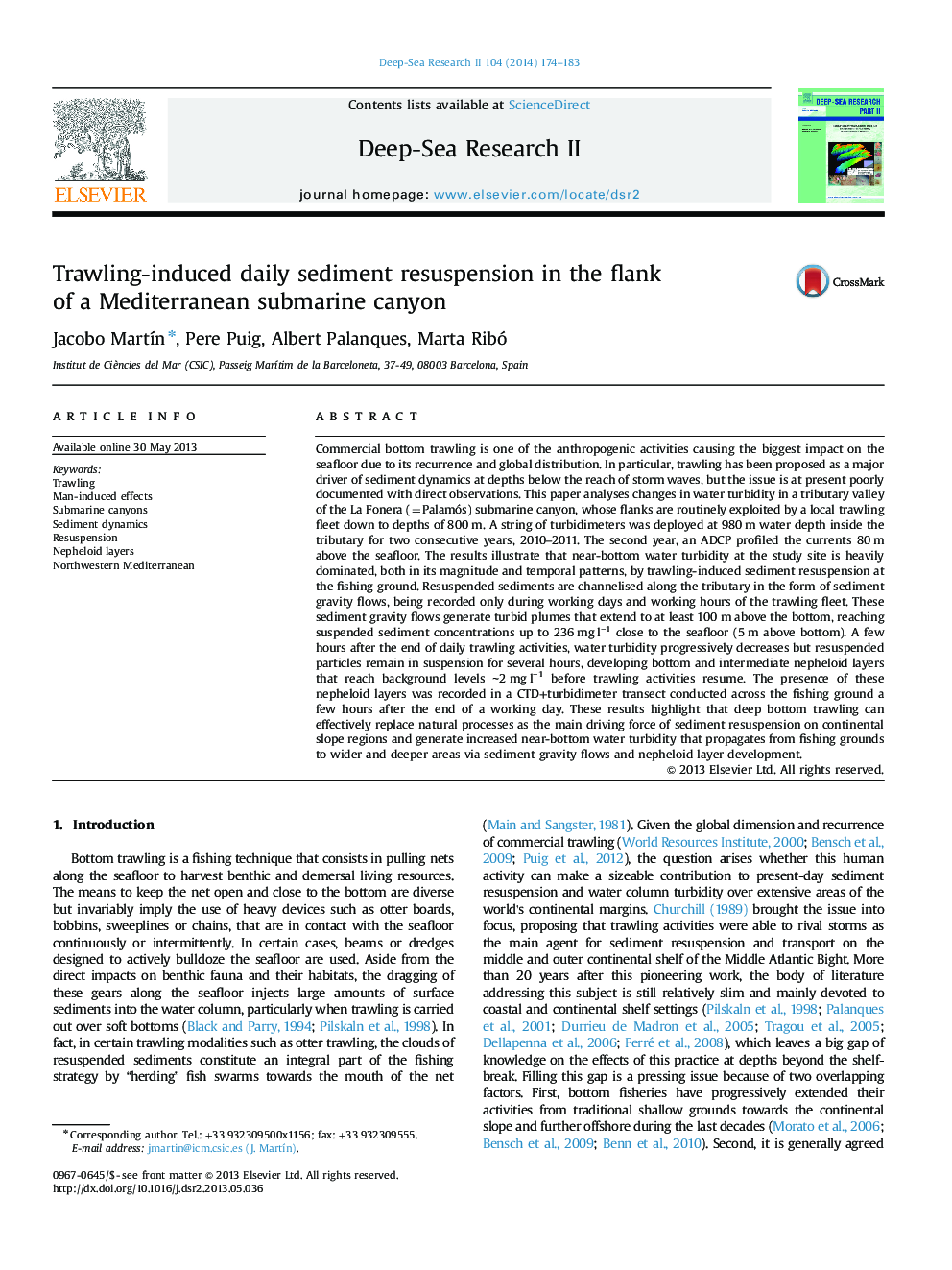| کد مقاله | کد نشریه | سال انتشار | مقاله انگلیسی | نسخه تمام متن |
|---|---|---|---|---|
| 4536394 | 1626436 | 2014 | 10 صفحه PDF | دانلود رایگان |

Commercial bottom trawling is one of the anthropogenic activities causing the biggest impact on the seafloor due to its recurrence and global distribution. In particular, trawling has been proposed as a major driver of sediment dynamics at depths below the reach of storm waves, but the issue is at present poorly documented with direct observations. This paper analyses changes in water turbidity in a tributary valley of the La Fonera (=Palamós) submarine canyon, whose flanks are routinely exploited by a local trawling fleet down to depths of 800 m. A string of turbidimeters was deployed at 980 m water depth inside the tributary for two consecutive years, 2010–2011. The second year, an ADCP profiled the currents 80 m above the seafloor. The results illustrate that near-bottom water turbidity at the study site is heavily dominated, both in its magnitude and temporal patterns, by trawling-induced sediment resuspension at the fishing ground. Resuspended sediments are channelised along the tributary in the form of sediment gravity flows, being recorded only during working days and working hours of the trawling fleet. These sediment gravity flows generate turbid plumes that extend to at least 100 m above the bottom, reaching suspended sediment concentrations up to 236 mg l−1 close to the seafloor (5 m above bottom). A few hours after the end of daily trawling activities, water turbidity progressively decreases but resuspended particles remain in suspension for several hours, developing bottom and intermediate nepheloid layers that reach background levels ∼2 mg l−1 before trawling activities resume. The presence of these nepheloid layers was recorded in a CTD+turbidimeter transect conducted across the fishing ground a few hours after the end of a working day. These results highlight that deep bottom trawling can effectively replace natural processes as the main driving force of sediment resuspension on continental slope regions and generate increased near-bottom water turbidity that propagates from fishing grounds to wider and deeper areas via sediment gravity flows and nepheloid layer development.
Journal: Deep Sea Research Part II: Topical Studies in Oceanography - Volume 104, June 2014, Pages 174–183